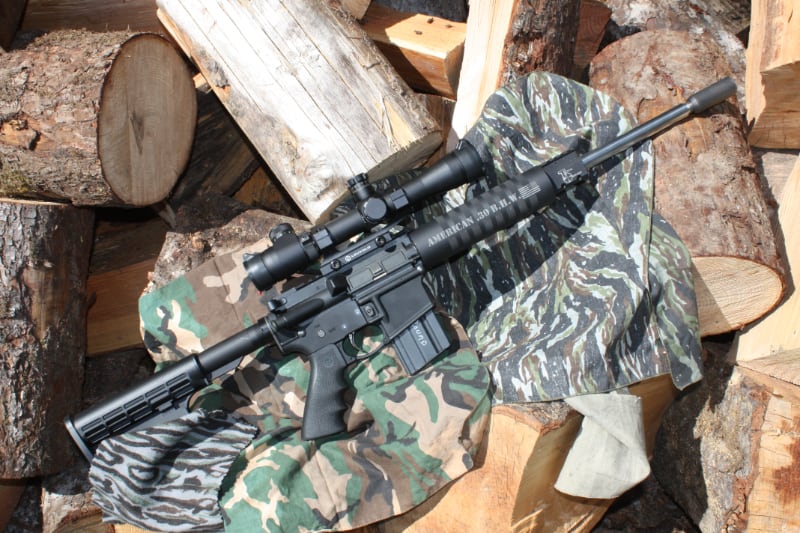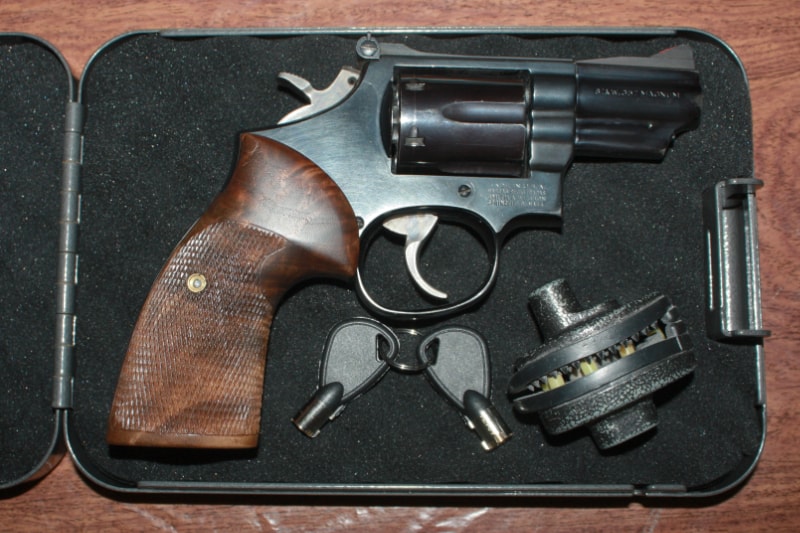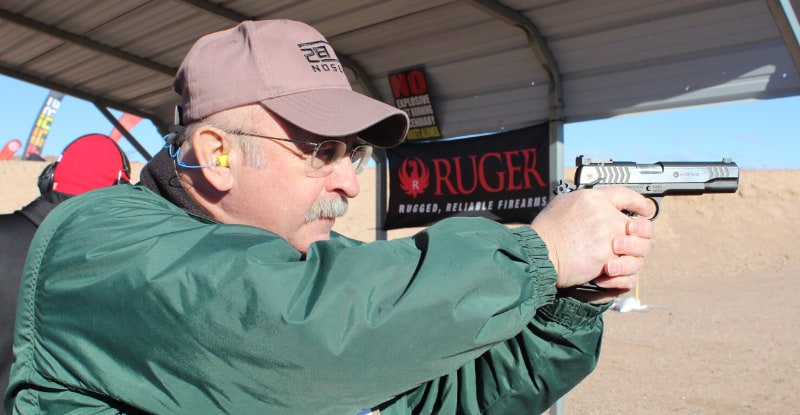Half of the Attorneys General in the U.S. Want SCOTUS to hear 2A Case
Late last month, something remarkable—perhaps even historic—happened, but it was really only reported in any detail by the firearms media.
Twenty-five state attorneys general—that’s half of all top state legal officials in the country—signed what is called an Amicus Curiae (“Friend of the Court”) brief urging the Supreme Court of the United States (SCOTUS) to accept a Writ of Certiorari in the case of Bianchi, et. al. v. Frosh, et.al., a challenge to Maryland’s ban on so-called “assault weapons.”
When was the last time anyone heard of 50 percent of the top legal officers in the U.S. being willing to sign onto a brief to the Supreme Court encouraging the justices to take what could be a landmark Second Amendment case?
The Amicus brief was spearheaded by Arizona Attorney General Mark Brnovich and West Virginia Attorney General Patrick Morrisey, both Republicans. Joining them were the top legal guns of Alabama, Alaska, Arkansas, Florida, Georgia, Idaho, Indiana, Kansas, Kentucky, Louisiana, Mississippi, Missouri, Montana, Nebraska, New Hampshire, Ohio, Oklahoma, South Carolina, South Dakota, Texas, Utah, Virginia and Wyoming.
If you don’t see your state on that list, it might be prudent to ask your state’s attorney general why not. Attorneys General are supposed to uphold the constitution, and last time I checked, the Second Amendment—which protects, rather than “grants,” the right to keep and bear arms—is still the cornerstone of that document.
Plaintiffs in the case against Maryland are the Second Amendment Foundation (SAF) and its sister organization, the Citizens Committee for the Right to Keep and Bear Arms, plus the California-based Firearms Policy Coalition, Inc., Field Traders LLC, David Snope, Micah Schaefer and Dominic Bianchi, the latter for whom the lawsuit is named. Defendant Brian E. Frosh is the Maryland Attorney General. Other defendants are Col. Woodrow W. Jones, III, secretary of the State Police; R. Jay Fisher, sheriff of Baltimore County, and Anne Arundel County Sheriff Jim Fredericks, all in their official capacities.
What's in the brief?
The 37-page Amicus brief is an eye-opening document written by someone, or maybe several someones, who really know the legal ground. It is detailed and actually fun to read because it makes sense.
Brnovich and Morrisey explained it all in a news release, which included a hotlink (above) to the brief. Take a coffee break and read this thing. You will find passages such as this:
“Some courts, then, have correctly held that the Second Amendment protects the right to carry arms outside the home. Confrontations, after all, ‘are not limited to the home.’”
This common-sense observation came in a case called Moore v. Madigan, another SAF effort that resulted in a mandate to the Illinois legislature to adopt a concealed carry statute. Illinois was the last state in the country to enact a law providing for legal concealed carry. At the time, the state had to be dragged kicking and screaming into the 21st century.
There is one lengthy paragraph, which should capture the high court’s eye.
“And make no mistake,” the brief says, “some lower courts have used these doctrinal uncertainties to keep the Second Amendment right alive in only the narrowest ways. One striking example is the Ninth Circuit’s decision in Jackson v. City and County of San Francisco. There, the court upheld ‘a flat prohibition on keeping unsecured handguns in the home.’…The statute there required firearms to be ‘stored in a locked container or disabled with a trigger lock’ whenever they were not on the homeowner’s person…The Ninth Circuit held this mandate did not amount to a ‘substantial burden on [a] Second Amendment right.’
The brief asked rhetorically, “The problem? Heller held unconstitutional a D.C. ‘requirement … that firearms in the home be rendered and kept inoperable at all times’—a restriction essentially identical to the one the Ninth Circuit left in place in San Francisco… Heller says that the Second Amendment protects the right to keep a firearm ‘operable for the purpose of immediate self-defense,’ and that laws render guns inoperable make self-defense practically ‘impossible’ in certain routine circumstances. But the Ninth Circuit perceived enough ambiguity in Heller to revive those impermissible restrictions anyway.”
This narrative explains the problem with many lower courts, where liberal judges have been dancing around both the 2008 Heller and 2010 McDonald rulings because they simply refuse to recognize the Second Amendment protects an individual right to own guns and carry them.
What's at stake?
There is, the 25 attorneys general argue in their brief, a lot more at stake than a gun ban in Maryland.
“If left untouched,” the brief explains, “Maryland’s unconstitutional ban on firearms commonly possessed by law-abiding citizens for lawful purposes, and others like it, threatens the constitutional rights of all Americans. If a sufficient number of states are allowed to impose such bans, it could pave the way for future courts to find that such weapons now owned by millions are no longer in common lawful use. Such an attempt to artificially change the firearms landscape justifies this Court’s review.”
As the brief notes elsewhere, the Fourth Circuit (in which Maryland is located) has reached a conclusion many gun owners would consider simply bizarre.
“Although Heller held that the right to keep and bear arms extends to firearms that are ‘in common use’ for ‘lawful purposes,’ the Fourth Circuit held that ‘weapons most useful in military service’ are ‘outside the ambit of the Second Amendment’ without regard to whether these same weapons are also in common use for lawful purposes,” the brief says.
Several pages later, the brief reminds the high court, “the vast majority of States have recognized their citizens’ right to possess commonly owned weapons like these—not only by refusing to ban them, but by forbidding political subdivisions from doing so, either.”
“Leaving Maryland’s ban in place,” the brief warns, “emboldens other States to enact similar bans, reducing the number of modern sporting rifles and similar firearms owned by the public—and thereby tilting the scales of Heller analysis. Developments will come less in the form of reasoned and independent judicial analysis, and more in the form of hasty enactments informed by a desire to strike while the iron is hot.”
And then there is this, which veteran readers should understand in a heartbeat: “On its face, the Fourth Circuit’s novel standard leads to absurd and confusing results. For instance, the Model 1911 .45 caliber pistol may be considered a weapon ‘most useful in military service’ given the military used it as its standard sidearm for nearly 75 years. Yet it is also one of the most popular civilian handguns today… While John M. Browning designed the 1911 pistol specifically for the military, it ‘was based on the Models 1900, 1903, and 1905s, which were all commercial guns’ and the 1911 was simultaneously ‘prevalent in both the military and civilian market’ after its military adoption.”
Then the brief lowers this boom. “The Fourth Circuit’s upside-down analysis would first examine the Model 1911’s military utility and declare it eligible for a ban before acknowledging that the weapon is in widespread common, lawful use by the civilian population. Yet such focus on military use would either ignore the scores of other handguns that may be more powerful or accurate than the 1911 or—worse, and as the holding below essentially does for rifles—lead the Court to declare that almost all semiautomatic pistols that even look like or share features of the 1911 are subject to ban. This broad ban would fly in the face of Heller, which recognized “that the American people have considered the handgun to be the quintessential self-defense weapon [and] …. the most popular weapon chosen by Americans for self-defense in the home.” Such guns are thus in common use and critical to the exercise of their core Second Amendment right to self-defense.”
This passage underscores why the Maryland case, dealing with semiautomatic rifles, is so important to firearm owners. If you haven’t yet figured it out, the gun prohibition movement is not interested in crime control, nor is it really interested in modern sporting rifles, except to establish a precedent to make banning firearms appear acceptable.
At issue is the Second Amendment and the right to have any gun. Without pinning it down in plain language, this brief makes it clear the ultimate goal would be the elimination or severe curtailment of private gun ownership.
SCOTUS may not announce right away whether it will take the Maryland case. It still has to produce a decision in New York State Rifle & Pistol Association v. Bruen, the case on carry outside the home. If any court in history could restore the Second Amendment right to keep and bear arms to its full extent, this is the court to accomplish the task.
Fasten your seat belt. It’s liable to be a rough ride.






